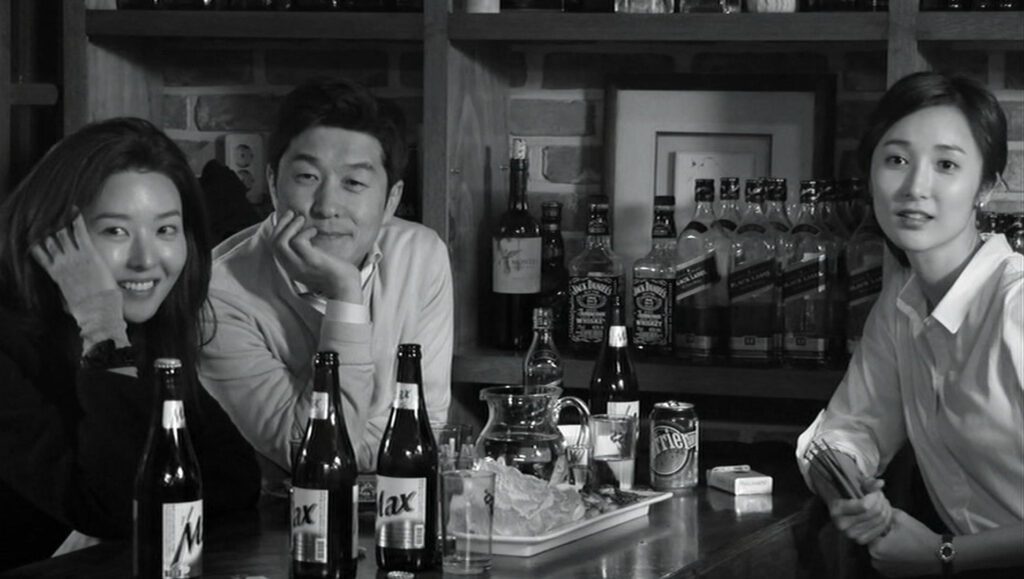
The Day He Arrives
2011, directed by Hong Sang-soo
Hong Sang-soo’s movies are often set in the bohemian world of independent cinema, with characters who are movie directors, actors, writers, and film students. He claims this is natural to him because that’s the world he knows best, but as always we should not take a director at his word. At least in The Day He Arrives there’s more to it, because the movie is about the thought processes of a filmmaker. The protagonist Yoo Seong-jun is a lapsed film director, and if we put the pieces together we should deduce that his films were not very good. More importantly, we can understand exactly where he and so many real-life filmmakers go wrong.
Our challenge is to make sense of the film’s enigmas, including its strange repetitions. Three times the characters visit the Novel bar, each time introduced in voice-over as if it’s a new location. Seong-jun crosses paths thrice with the same actress, and the last time she happens to be scouting locations with the comical trio of film students Seong-jun had met on the first day. That coincidence may be believable, but it’s uncanny that Seong-jun’s ex-girlfriend Kyung-jin and bar manager Ye-jeon look exactly alike. The most telling repetition is in the finale when Seong-jun retraces his footsteps from the opening shot and calls his friend Young-ho as if he’s only just arriving again in Seoul.
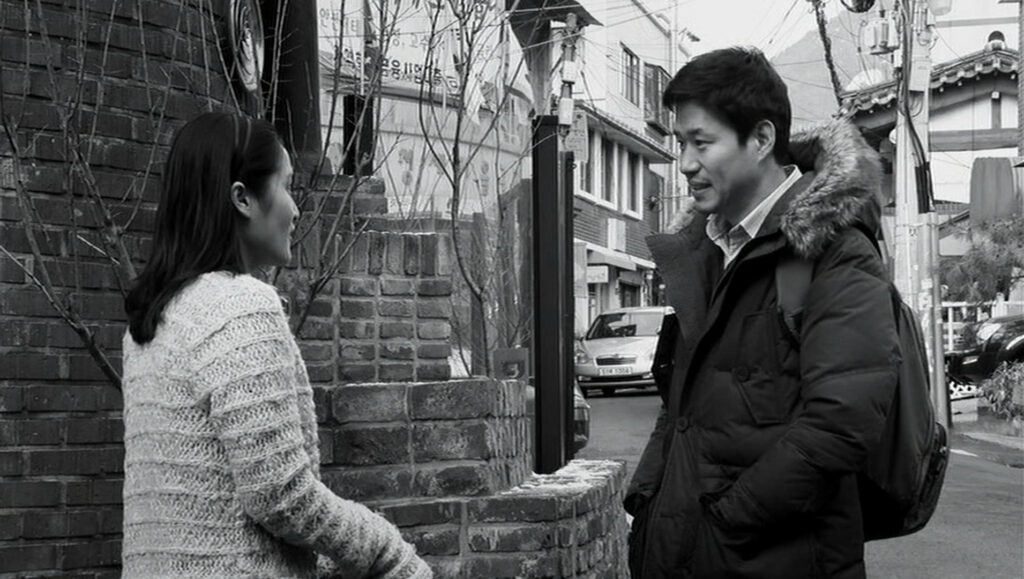
Those two variations of this phone call bracket the story, giving us a framework for solving all the coincidences and contradictions. The action in The Day He Arrives is divided among five days, but it’s this first day, the day he arrives in Seoul, that grounds the story in reality. Everything else occurs in Seong-jun’s creative filmmaker’s imagination while he waits for Young-ho, as he sketches a mental story of how his visit might unfold.
The first thing about Seong-jun’s imagined scenario, if we go along with this interpretation, is how thoroughly he flatters himself. The actress in the street is excited to talk to him and doesn’t want to let him go. The three film students invite him to their table, compliment his looks, treat him like a celebrity, follow him to the night market, and imitate his gestures. Boram and Ye-jeon admire his piano playing, stare at him adoringly, and follow him outside when he goes for a smoke. In all these imagined scenes Seong-jun is well aware that people don’t always worship him. He remembers that he had left his ex and his first leading man on bad terms, but in his imagination they too come around to his side. After airing out their differences Joong-won starts to look at him with respect, and after some initial resistance Kyung-jin makes love to him and spends the remaining days sending him longing text messages. Ye-jeon falls for him immediately. They kiss passionately, she keeps calling him “honey”, and after making love she’s amazed someone so “manly” is interested in her. It all strains credibility.
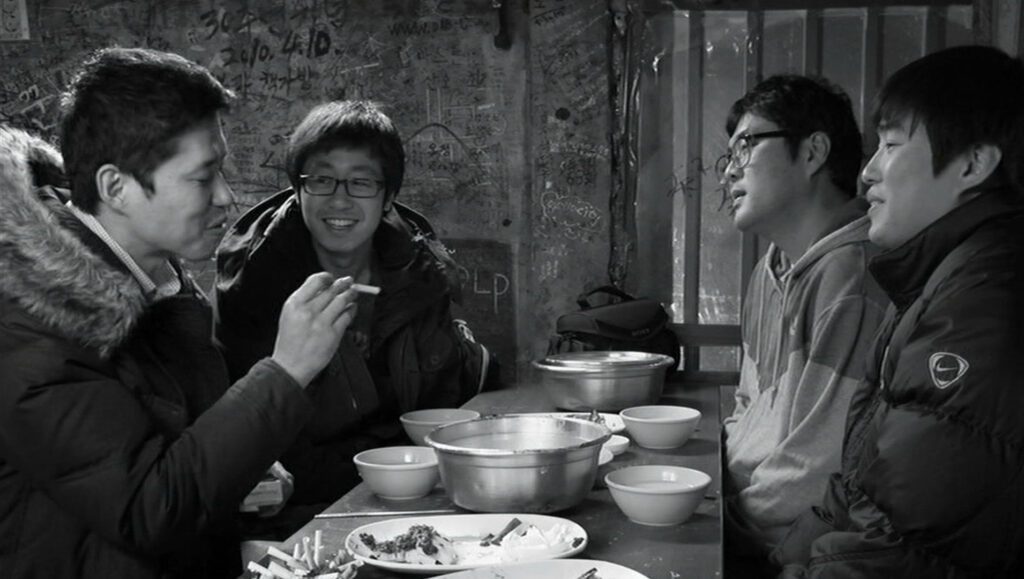
The second thing about Seong-jun’s projections is that he’s always ready to reject people. After first calling Young-ho he tells himself, “I’m not going to meet anyone besides him.” Even with little to do that afternoon he’s in a hurry to escape from the talkative actress. He joins the three students in the café reluctantly, and just when things are going well he freaks out over an imagined offence and bolts away. After reconciling with Kyung-jin he insists on cutting off communication with her, and he ultimately does the same with Ye-jeon. He tells Boram he came to Seoul just to meet Young-ho and “doesn’t need to see other people.”
If all of the encounters and conversations that fill the movie – everything between Seong-jun’s two phone calls to Young-ho – take place in his imagination, then they give us a clue to the kind of film he would make. We’ve seen his vanity and his disinterest in the people around him, and he also reveals a few of his creative short-cuts. At the Novel bar on Day 3 he talks about the ubiquity of coincidence: “Random things happen for no reason in our lives. We choose a few and form a line of thought made by all these dots, which we call a reason.” He admits that people tend to find nonexistent meaning in coincidence, and yet the story he puts together – if that’s what’s happening between the two phone calls – is full of coincidences. If that’s how his imagination works, and if that’s how he makes movies, then it’s a convenient way to make a film seem deeper than it actually is.
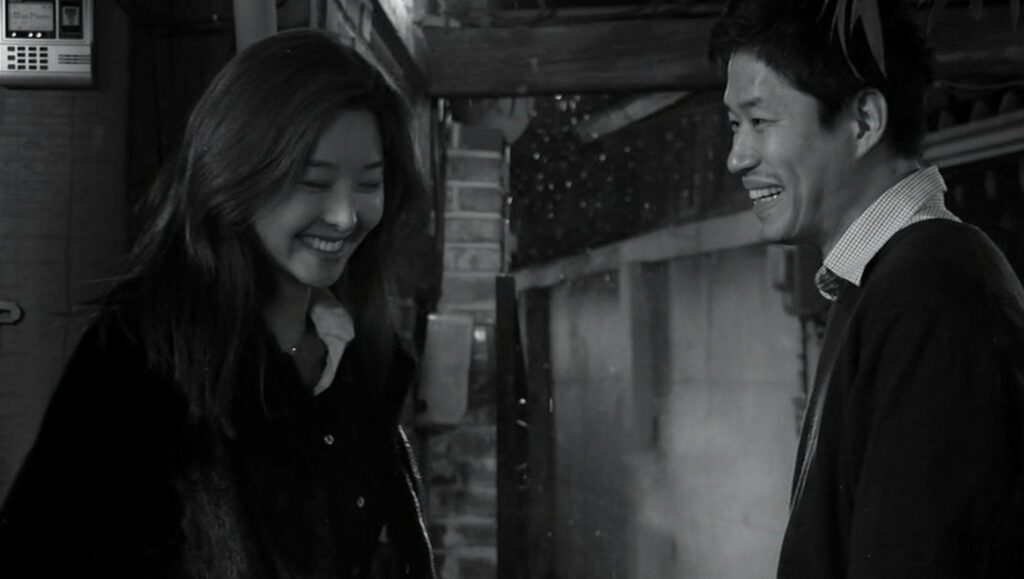
Right after the conversation about coincidences, Joong-won shares his theory that women always believe it when they’re described with two opposing extremes. He demonstrates on Ye-jeon: “You seem very practical and proper on the outside, but you’re extremely emotional on the inside,” and she falls for the transparent manipulation. Seong-jun doesn’t hear this exchange (he’s outside with Boram), but that hardly matters if it’s part of his imagined fiction. The next day he and Young-ho test the same theory at the restaurant, and Boram again confirms it, amazed at how well Seong-jun’s description fits her. While this method of cold reading might make a good party trick, it reveals a simplistic conception of personality. If that’s how Seong-jun draws the characters in his movies, it’s awfully formulaic.
Finally, after Seong-jun has laid bare his anti-social personality and his poverty of imagination in his projected future encounters, The Day He Arrives brings us back where it started. Seong-jun comes down the same sidewalk where we first saw him – only this time he is not yet holding his phone. At the intersection he turns right instead of crossing the street to the left, and now, when he calls his best friend, Young-ho actually answers to say he doesn’t have time to meet just now. Apparently we are seeing a different version of Day One, i.e. what happens if only Seong-jun were to dial his friend a few seconds later. The opening image bolsters this hypothesis with three arrows on a road sign indicating alternate directions, and the movie’s Korean title In the Direction of Bukchon reinforces it. The last seven minutes present the viewer with a choice. Are they merely a possible different outcome? Or do they shed insight on the story, showing the reality behind the fantasy? The events after the phone call indicate the latter.
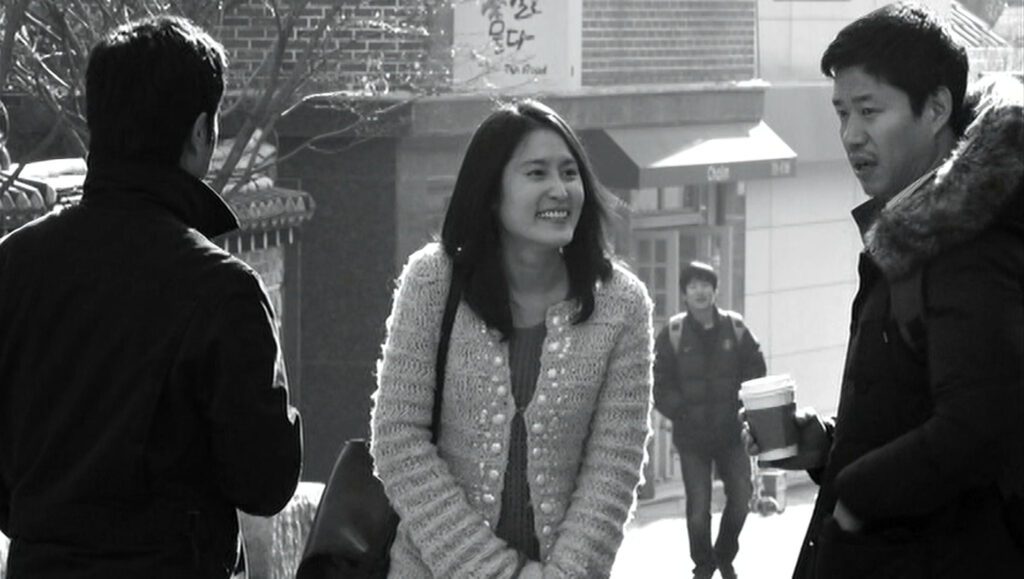
The remaining incidents echo Boram’s anecdote from Day Three about meeting a director, a producer, a musician, and a student of hers all within twenty minutes. In quick succession, Seong-jun runs into a couple of guys shooting a film, an older man who talks about maybe collaborating again, a film musician, and a young woman who claims to be a fan of his films. If we take this version of Day One as reality, we can see how it inspires Boram’s anecdote, which after all is really Seong-jun’s own invention.
What’s so striking about the last seven minutes, and what makes them more believable than all that precedes them, is that the storytelling is totally stripped of Seong-jun’s vanity. If Young-ho’s phone is turned off, Seong-jun can make any excuse he likes to keep inflating himself; but if Young-ho has no time for him it’s a blow to his pride. His four encounters on the street are as disappointing as Young-ho’s rebuff. The two filmmakers are indifferent to him, including the one Seong-jun recalls “used to be nice to me.” The older man seems to be trying politely to get rid of him. The musician is friendly but only talks about himself. Finally, even Seong-jun’s fan has her own agenda – she wants to photograph him for her project.
True to his character, Seong-jun initially rejects the woman, saying he doesn’t like having his picture taken. What follows is a rather momentous turning point. Now that he’s tasted rejection himself, he suddenly changes his mind and accepts her proposition. He poses for her, and his stunned expression hints at a new self-awareness, the terrible realization that by rejecting everyone he has been missing out on life. The last shot is about as close as the movie gets to a close-up, and the effect is like the sole close-up of Charlie Chaplin that concludes City Lights, conveying a sense of dawning realization.
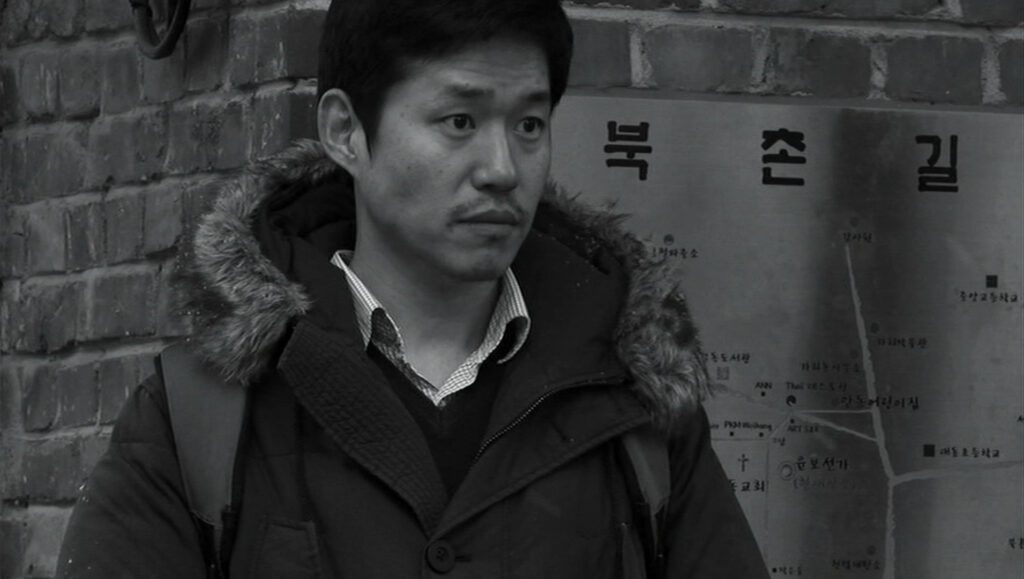
Seong-jun’s fault, in life and presumably in his filmmaking, is shutting out life as it comes to him. A movie needs to let its characters breathe, treating them as human beings rather than as means to an end or projections of the author’s self-interest. As Seong-jun looks through the falling snow at the woman’s camera, it’s encouraging to suppose that he’s finally opening himself to the abundant life around him, and that he has begun to see the way to making better movies.
CONNECTIONS:
The Cabinet of Dr. Caligari – Framed story with an unreliable self-promoting narrator; tale of self-deception; invitation for audience to diagnose a particular fault in the protagonist
City Lights – Only close-up comes at the end as a sign of revelation
Diary of a Country Priest – Portrait of an anti-social character who repeatedly shuts life out
Pickpocket – Character who comes to realize he’s been shutting people out of his life
L’avventura – Finding wonder in the outwardly disappointing nature of reality
Cléo from 5 to 7 – Turning point when the protagonist finally acts selflessly and sheds vanity
The Exterminating Angel – Repetition reveals the underlying reality of a situation
TIMELINE:
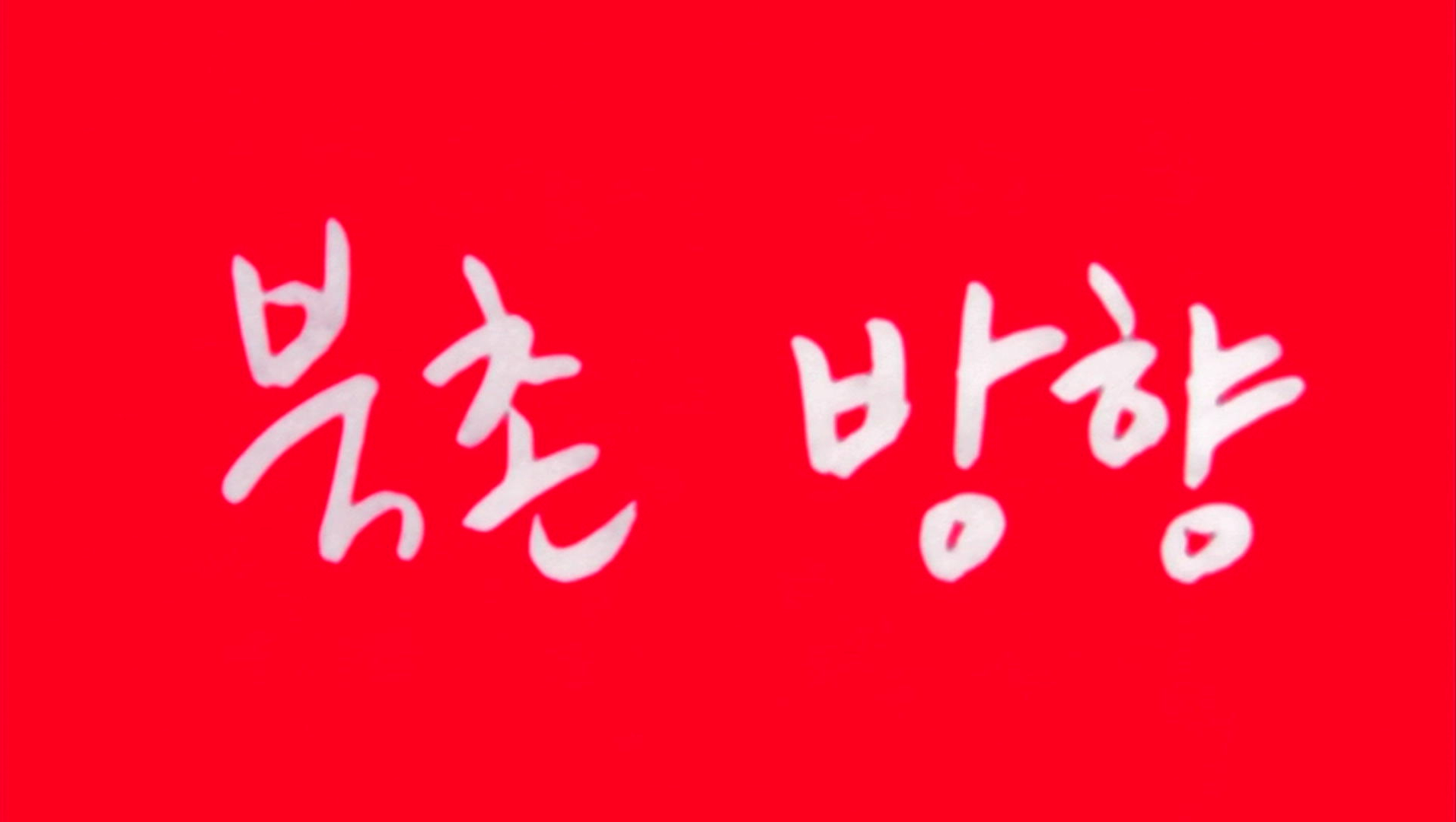
0:00:00 – Opening titles (red screen)
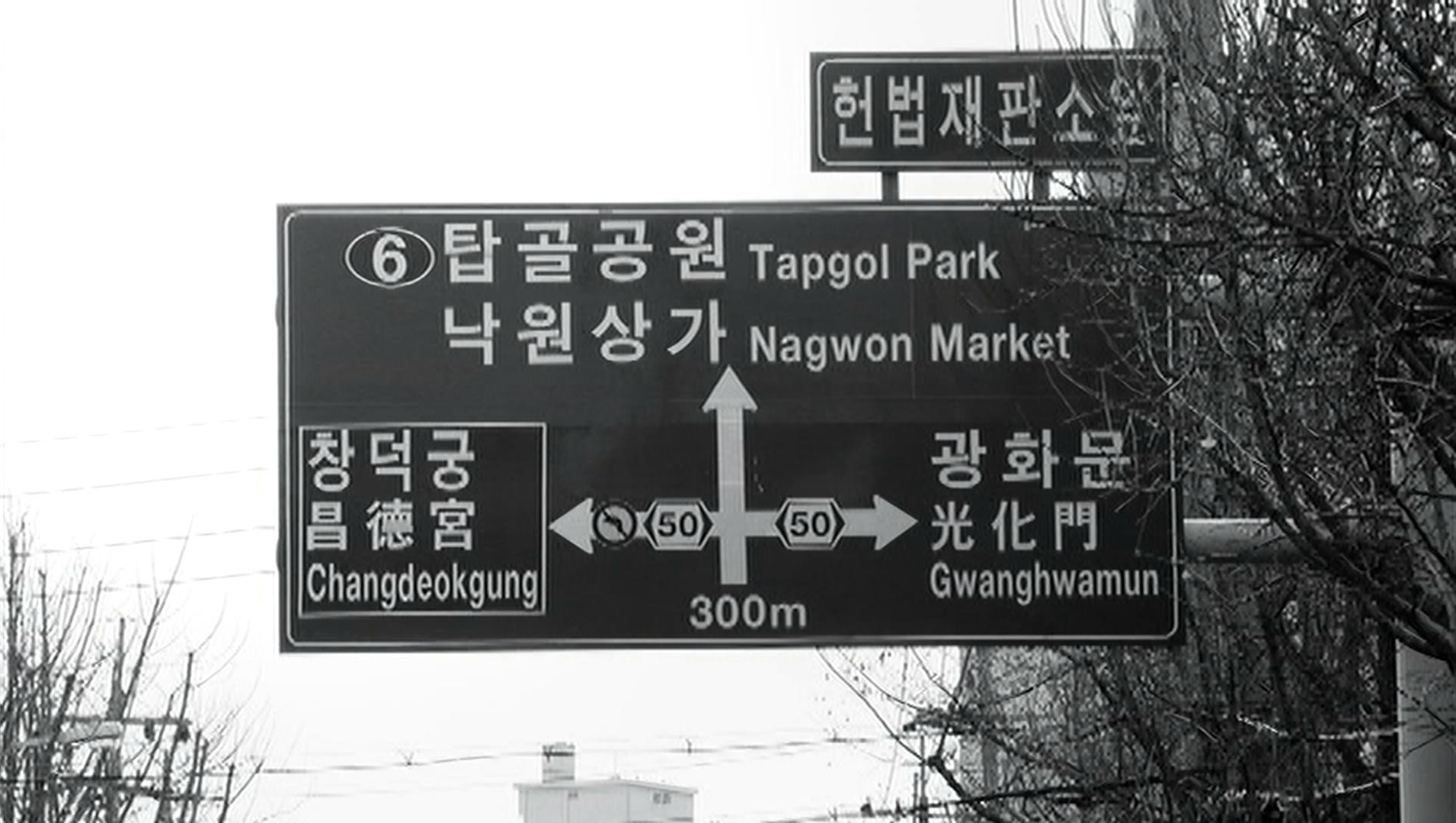
0:01:16 – Day 1 (Seong-jun arrives in Seoul)
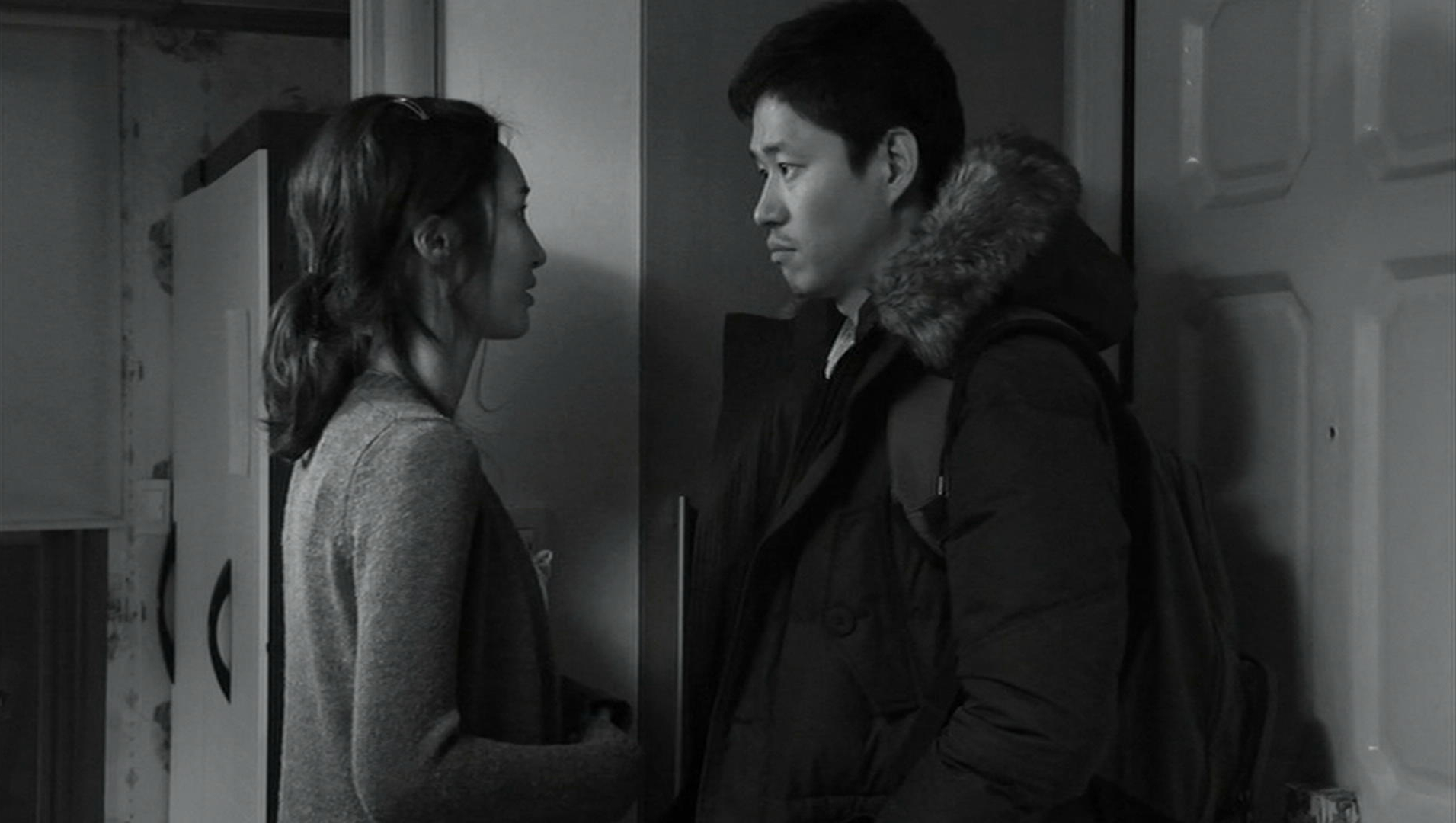
0:14:38 – Day 2 (Morning in Kyung-jin’s apartment)
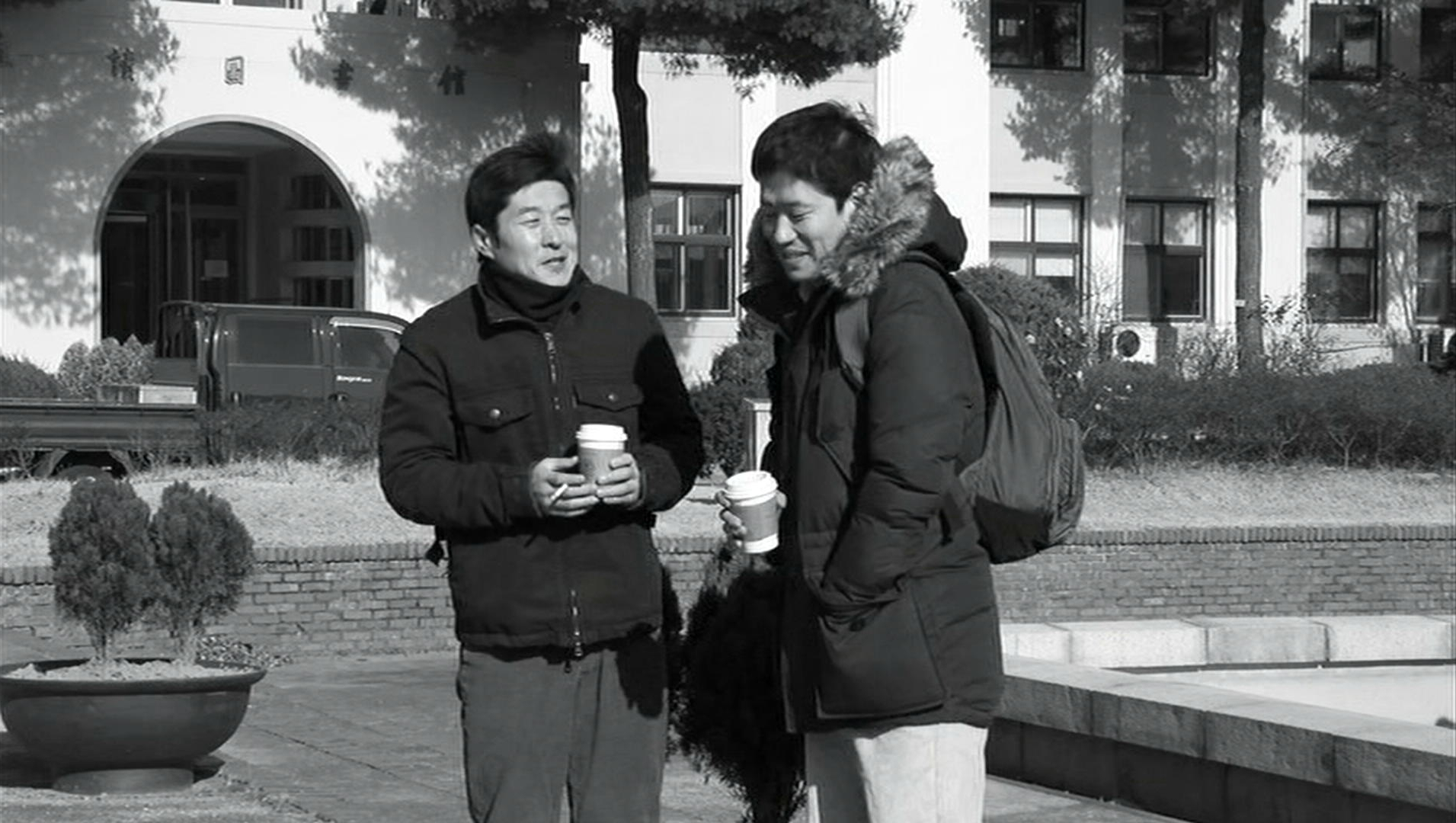
0:27:00 – Day 3 (Young-ho and Seong-jun drink coffee outside the Jeongdok Public Library)
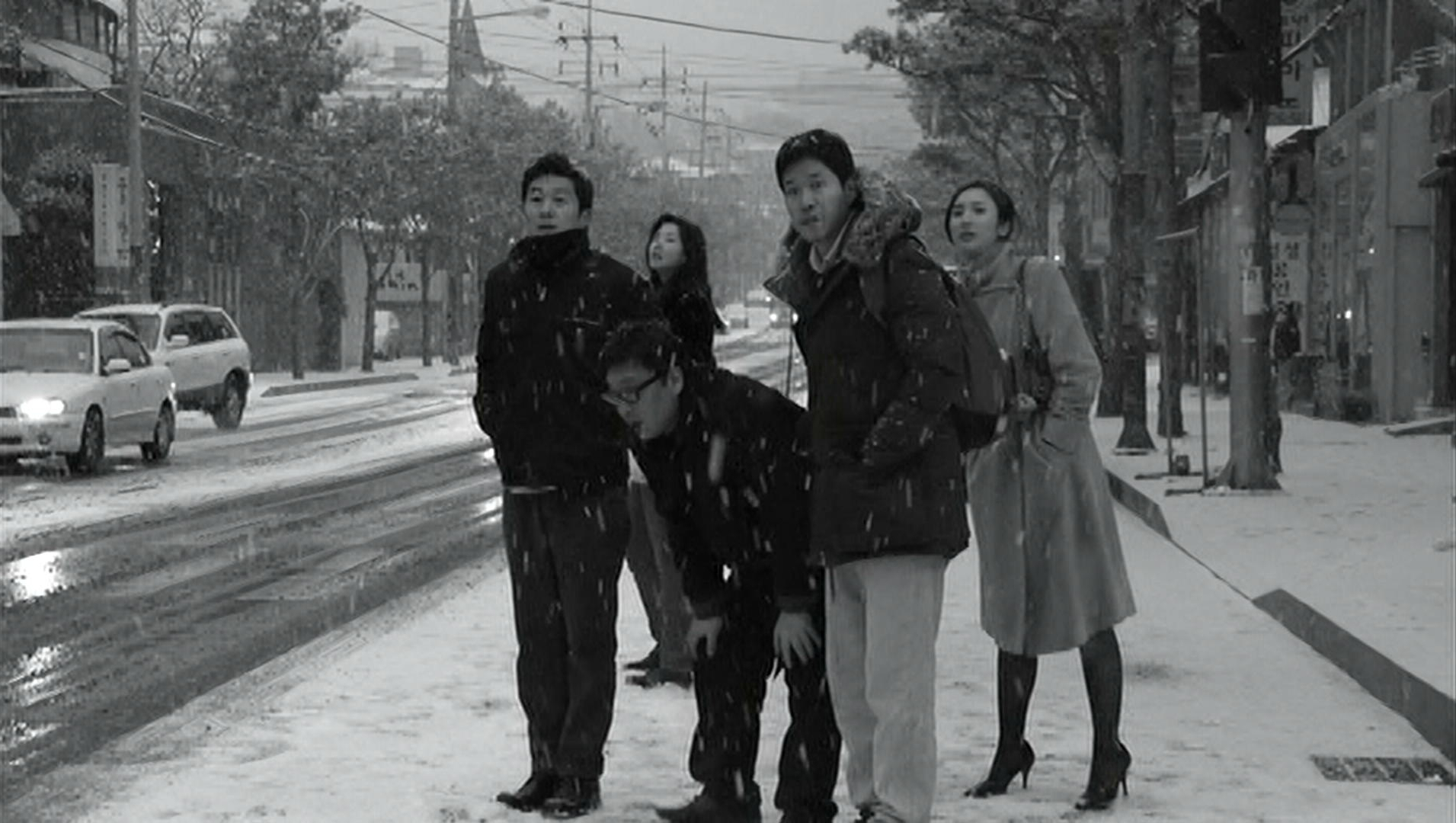
0:47:27 – Day 4 (The five friends wait for a taxi after staying up all night)
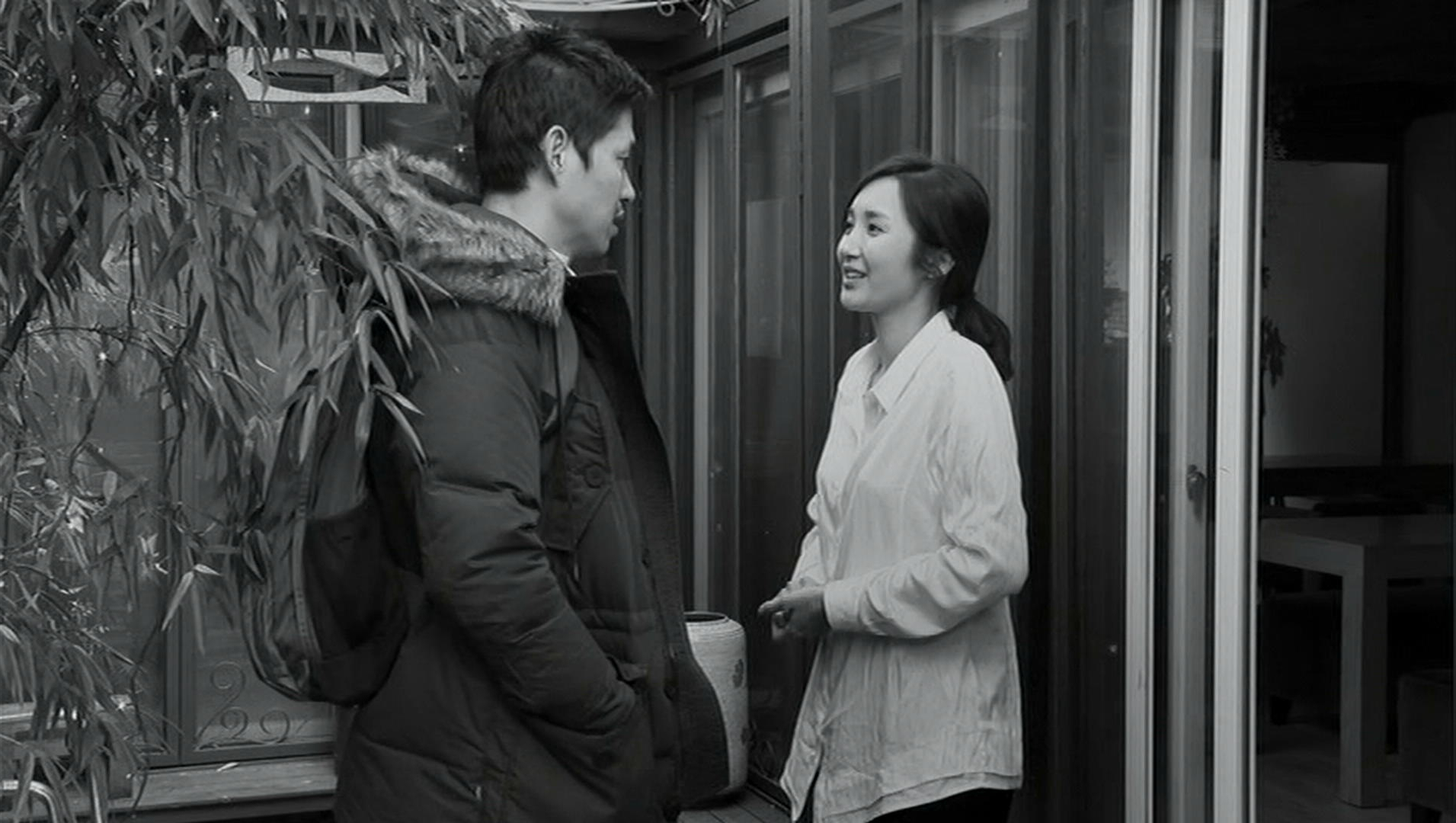
1:08:56 – Day 5 (Morning at Ye-jeon’s place)
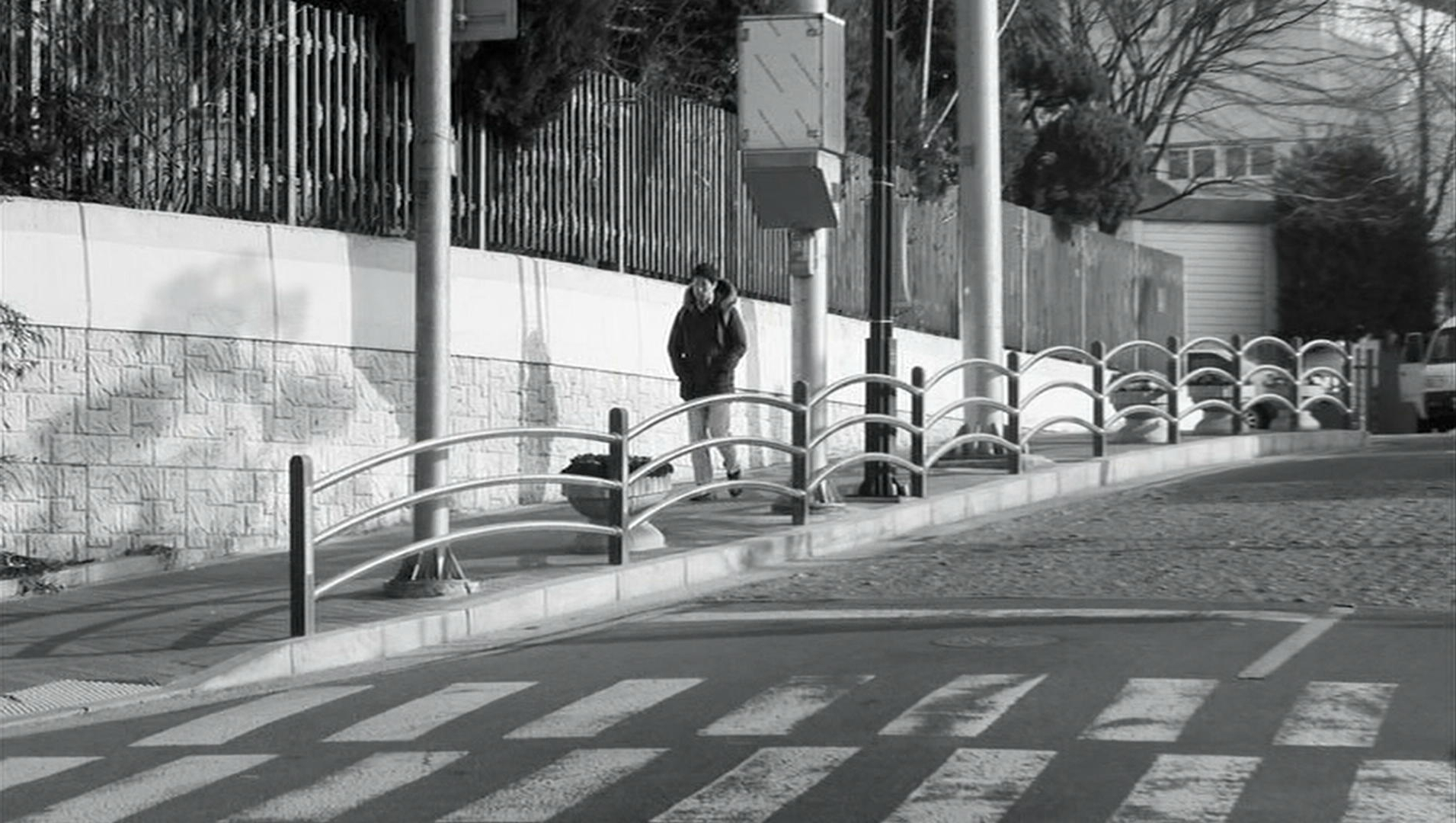
1:11:17 – Day 1 again (Seong-jun retraces his first footsteps)
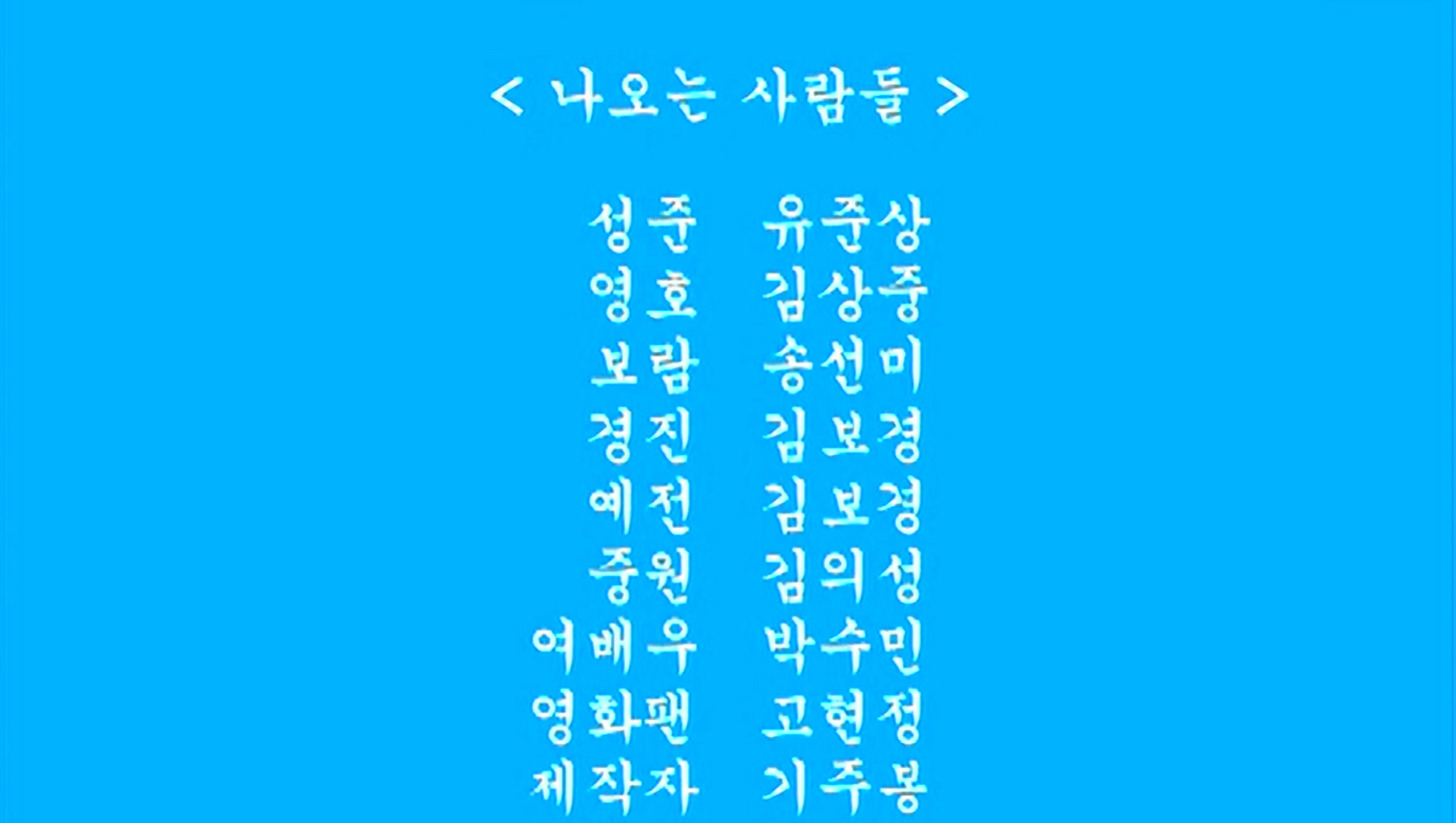
1:17:59 – End credits (light blue screen) [film ends at 1:18:51]